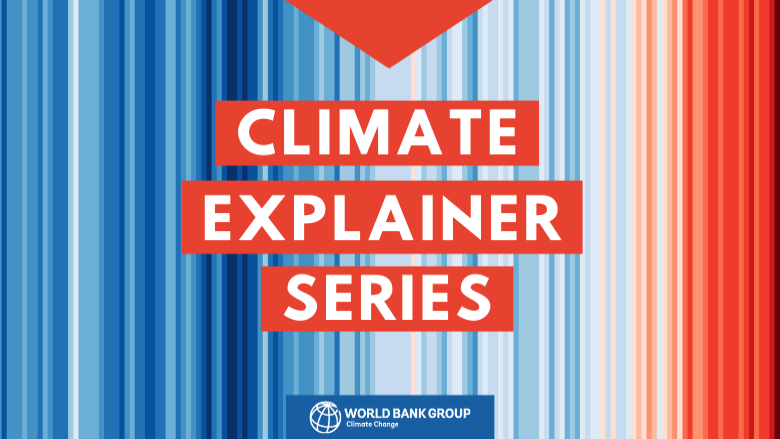What does concessional finance look like in practice?
Let’s make this tangible with an example from the Climate Investment Funds’ Clean Technologies Fund.
At a conference in 2021, the Kazakhstan Energy Minister said that in the last 5 years, the installed capacity of renewable energy in the country increased six times, from 240 MW in 2015 to 1634.7 MW in 2020. As of March 2021, Kazakhstan had 115 renewable energy projects, and had created 1,310 fixed jobs and 3,000 temporary jobs every year. Importantly, the conference marked the announcement of a rise in ambition for the renewable energy sector in what was a historically staunch fossil-fuel-supporting and renewables-sceptic region.
In a few short years, an entire country had made a quantum leap in their renewable energy capacity, their private sector developer interest, and most importantly their national contribution to a low carbon transition.
So, what happened?
Notably, the shift didn’t start with private capital. The $8 billion Climate Investment Funds, supported by development funds from the UK, US, Japan, Germany, Canada, France, Spain, Sweden and Australia, makes it one of the largest climate investment funds in the world. However, CIF knew that deploying concessional finance alone would not fix the problem. Targeted and collaborative technical support and preparation, with sector-wide transformation in mind, could.
As early as 2009, the CIF had already engaged with the Kazakhstan government, alongside the European Bank for Reconstruction and Development (EBRD) and the International Finance Corporation (IFC), part of the World Bank Group, to raise awareness of and subsequently develop the region’s clean energy policies. This preparatory technical assistance started in 2009 and continued through to 2016, resulting in a renewable energy law, feed-in tariffs for renewable energy projects, and purchase obligations for renewable energy projects for the next 15 years.
During these 7 years, concessional finance was not deployed as loans to specific projects at all, but as grants to fund vital capacity building and policy work. These activities are what could be called the development of the right enabling conditions in order to kick-start a renewable energy market in the region and enhance the chances of success for any forthcoming commercial renewable energy projects. However, while these actions provided more solid foundations, several economic factors continued to hold back progress. These factors were related to the health of the economy and maturity of the financial system itself. They showed up as financial barriers for potential investors and developers in the region in the form of low liquidity, a chronic lack of access to infrastructure-scale capital, limited loan tenures of 4-5 years not conducive with market-making renewables projects, inflation and currency fluctuation, and rocketing interest rates.
This is where the role of project-based concessional finance could really make a difference. Via CIF’s Clean Technology Fund (CTF), flexible, below market-rate capital was provided to support each of these challenges as they happened on the ground. To support liquidity, CTF provided concessional finance to developers and blended it with development bank capital from MDBs. To tackle the longer payback periods associated with new renewable energy projects, CTF offered 15- to 20-year loan tenures which helped inform other local players that renewables weren’t necessarily higher risk, just longer-term return prospects. To tackle domestic interest rates, CTF provided cornerstone capital at low interest rates of between 1-2%, knowing that this could later be crowded in by private sector rates of 10-12% in order to generate an overall commercially viable blended interest rate. Finally, by providing funds in multiple currencies – USD and EUR – the CTF was able to help the country manage some of the currency risks.
On top of the specific concessions that enabled the market, CTF also selected projects that would have a transformative effect on the region. Since then, these projects have come to symbolize the first projects that demonstrated the viability of the renewables sector in the region. Specifically, the CTF supported the financing of the first utility-scale solar photovoltaic project (Burnoye-1) and the country’s first wind project (Ereymentau-1).
In total, CTF invested approximately $55.5 million of concessional finance into Kazakhstan’s clean energy sector. As a direct result of this funding, approximately $200 million of further MDB funding was secured, together with another $412 million in follow up financing – making an attractive leverage ratio of approximately 11:1. As a result, total installed renewables capacity across the country grew to 542 MW for solar PV and 284 MW for onshore wind by the end of 2019.
Elsewhere, the policies put in place to kickstart the sector, like the feed-In tariff brought into action in 2013, attracted $1 billion of clean energy investment into the region alone. And further technical support provided through funds from the CTF enabled the country to develop capacities in clean energy tendering to improve competitiveness and drive more developer and investment interest to the region.
Targeted support like this has enabled Kazakhstan to deliver on its Nationally Determined Contributions (NDCs) in support of the Paris Agreement. By 2020, the country pledged to derive 3% of its energy capacity from renewables. By the end of 2019, Kazakhstan was producing around 2.3% of the country’s electricity from Solar PV, onshore and small hydropower, while large hydropower, was generating a further 9%.
However, to achieve Kazakhstan’s NDC, the energy intensity of the economy must also be reduced by 30% by 2030 and 50% by 2050; with almost 70% of electricity currently coming from coal power plants, renewables can help Kazakhstan accelerate progress.
Achieving these targets and attracting further investment into renewables in Kazakhstan will require addressing another major barrier: the efficacy of the power grid. Much of Kazakhstan’s grid is old, which contributes to about 13% of the annual power generated being lost[11]. Grid infrastructure and capacity must be a major focus in coming years because so much investment in renewables and green end-user technologies such as electric vehicles are dependent upon it. CIF and EBRD are already stepping up – EBRD and partners are investing $30 million to support a major power utility and grid operator in Western Kazakhstan to modernise existing substations and distribution, and install new power lines, as well as data and automatic control systems. Elsewhere, CIFs Technical Assistance Facility is helping the Kazakhstan Electricity Grid Operating Company (KEGOC) to integrate renewables through enhanced tools, procedures and modernization of grid infrastructure.
As Kazakhstan strives to reach its Nationally Determined Contributions over the coming years, organisations such as CIF, EBRD and IFC will continue to play an important role in enabling and empowering the country to bridge the gap to investment-ready projects and transform their energy mix entirely.
What does Kazakhstan’s experience say about the role of concessional finance?
; it can scale high-priority projects that impact the world’s collective climate and development objectives. Concessional finance works best when it is used alongside long-term strategic engagement and technical assistance with a country; and, when done well, it can create game changing, sector transforming results.
What is the potential for concessional finance to accelerate the energy transition?
In order to reach net zero goals, it is estimated that the world needs to invest approximately $1-2 trillion per year in the transition. By 2030, a further $300 billion per year will be required to continue to build global resilience against the changing climate.
In the latest State of Climate Finance report by the Climate Policy Initiative, Climate finance was estimated to reach between $608-622 billion in 2019. In the same time period, total assets under management in the private sector reached $6.5 trillion.
Public funding will not be able to plug this gap on its own. The world urgently needs more innovative programmes and financial mechanisms like the ones used by, and in conjunction with, concessional finance mechanisms that can bridge the gap between public funds to larger scale private sector capital.
However, in order to get there, the role of concessional finance itself will need to evolve, too. To date concessional finance in climate finance has rarely been considered a source of returning income for a distributing fund. However, as long-term projects begin to move into maturity, there is now demonstrable evidence for how funds may consider structuring and valuing their in-flows to fund more strategic programmes and priorities.
Finally, after over a decade of practice at a project and programme level, the role of concessional finance is now being explored at fund level. This has particular growth potential for climate finance, in that a fund that is distributing several billion USD at a time, can more effectively and efficiently leverage private sector capital than the several million USD projects and programmes on the ground.


